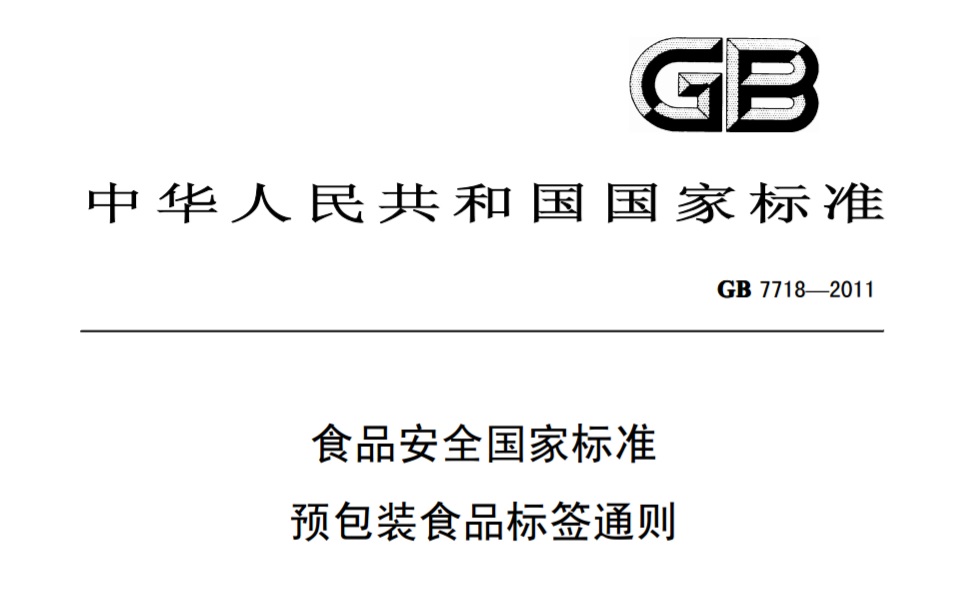2019 ended with a “roar” from the food regulator.
New draft GB 7718 (the fundamental standard for labeling of pre-packaged food) has in fact been released for public comments on 31 December 2019. Comments can be submitted until 28 February 2020.
When it will be approved in its final version, the impact will be huge on food companies.
Here a brief summary of some of the most relevant provisions, many of which were already included in the preliminary draft of December 2018.
Allergens
Ingredients containing allergens – as widely announced – become a mandatory item. In particular, the mandatory allergenic labeling concerns the following ingredients:
- Gluten-containing cereals and their products (such as wheat, rye, barley, oats, spelt wheat or their hybrids);
- Crustaceans and their products (such as shrimp, lobster, crab, etc.);
- fish and its products;
- eggs and their products;
- peanuts and their products;
- Soy and its products;
- Milk and dairy products (including lactose);
- Nuts and nuts products;
Beside those, voluntary labeling can be done for other ingredients containing possible allergens.
Labeling of bacteria
Bacteria added into foods that do not have fermenting function and have not been deactivated or removed shall be labeled with their specific name; corresponding strain number and strain content may also be indicated.
Bacteria added into foods that have fermenting function and have not been inactivated or removed can be marked as “Fermentation bacteria “,” Microbial fermentation agent “.
Bacteria added ito foods during the production process, that have fermenting function and are removed by inactivation or filtration may not be marked.
Quantitative labeling of Ingredient
Positive claims
Ingredients mentioned on food label or in food product instruction sheet are not considered emphasized (and do not require QUID) in the following cases:
- they are mentioned in allergy alert, other warnings, or reminders;
- they are mentioned only in use instructions or suggestion for product pairing/mixing;
- they are only mentioned for description of sensory attributes such as product physical specs, flavor, taste, mouth feeling, technology and so on.
On the other hand, ingredients or component mentioned in food product name are generally considered emphasized, except in the following cases:
- food product name is identical to (or is equivalent to) those provided by a National, Industry or local standard, and its equivalent name, same meaning or substantially equivalent;
- ingredient or component content already regulated in S National, Industry or local standard;
- ingredient or component used only to describe sensory attributes such as product physical specs, flavor, taste, mouth feeling, technology and so on. In such case the word “flavored”, “flavor” and so on shall also be used.
Graphics or picture printed on package, to illustrate taste, flavor and so on, if related to a food or food ingredient, does not constitute emphasis.
However, photograph of raw material or food is not allowed to be used in case the food product only contains the related essences.
Negative claims
It is clearly stated that when using “no” or “without”, the content of such ingredient or component shall be 0. Although this was already in the system, this is the first time a provision clearly states this principle.
In general, terms such as “without addition of”, “without use of”, and synonyms are not allowed, unless regulated by specific regulations. Hard times for “palm-oil free” or other similar “ingredient-free” claims.
Negative claims such as “without”, “does not contain” and other synonyms are not allowed for:
- food additives,
- contaminant,
- substance not allowed to be added according to relevant regulation or standard
- or substance ought not to exist in food product.
“Non-GMO” claim is explicitly forbidden.
COUNTRY OF ORIGIN
When two or more countries are involved in the production of food products, the country where substantial changes are finally completed is the country of origin.
It is allowed to also indicate the country/region of origin of the raw materials or ingredients.
FONTS
Minimum font for mandatory labeling items is 1.8mm for food products with maximum surface area larger than 60cm2 (until now, such requirement applied only for food products with largest package larger than 35 cm2).




